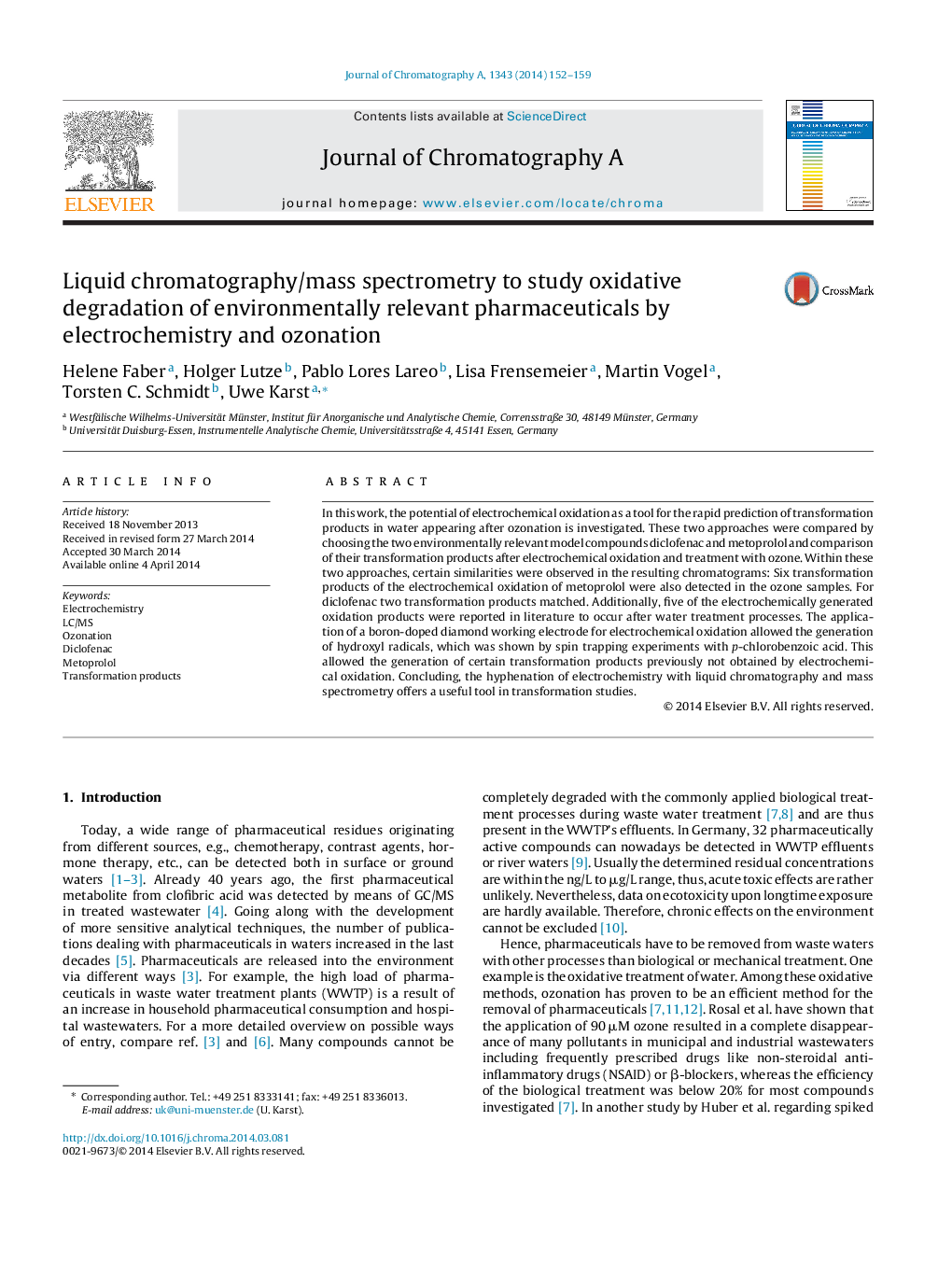| Article ID | Journal | Published Year | Pages | File Type |
|---|---|---|---|---|
| 1200061 | Journal of Chromatography A | 2014 | 8 Pages |
•Electrochemistry was used to study the degradation of pharmaceuticals.•Products were identified by LC/MS/MS.•The products were compared to those obtained by ozonation.
In this work, the potential of electrochemical oxidation as a tool for the rapid prediction of transformation products in water appearing after ozonation is investigated. These two approaches were compared by choosing the two environmentally relevant model compounds diclofenac and metoprolol and comparison of their transformation products after electrochemical oxidation and treatment with ozone. Within these two approaches, certain similarities were observed in the resulting chromatograms: Six transformation products of the electrochemical oxidation of metoprolol were also detected in the ozone samples. For diclofenac two transformation products matched. Additionally, five of the electrochemically generated oxidation products were reported in literature to occur after water treatment processes. The application of a boron-doped diamond working electrode for electrochemical oxidation allowed the generation of hydroxyl radicals, which was shown by spin trapping experiments with p-chlorobenzoic acid. This allowed the generation of certain transformation products previously not obtained by electrochemical oxidation. Concluding, the hyphenation of electrochemistry with liquid chromatography and mass spectrometry offers a useful tool in transformation studies.
